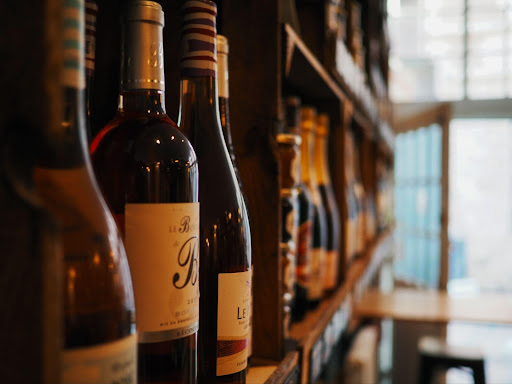Whether you are a wine enthusiast or a casual drinker, knowing how to properly store wine to maintain its quality, flavors, and aroma is essential for a good toast or cheers! To save the taste of the finest bottle, one should understand the correct storage techniques to elevate their wine experience. A bottle of good quality wine has the potential to increase in taste and value over time, but one should know how to store the wine until it is ready to be enjoyed.
By being attentive to factors such as provenance (where the wine comes from and how it is handled) and ensuring optimal storage conditions, you can taste how the winemaker intended it to be. So, whether you want to start your wine collection or simply want to conserve the rich taste of your favorite bottle, these few simple recommendations below will guide all wine lovers out there!
-
Maintain a Consistent Temperature
Since wine is known to be sensitive to frequent temperature fluctuations, opt for an area that provides a fairly consistent temperature, preferably without light — a cool closet or consistent environment basement and away from the humidity or heat.
Of all the important factors about temperature recommendations, in the case of specific wines, consult a manufacturer, but regardless of the label and type, never let the temperature go below 25 °F (-4ºC), as it causes the wine to freeze, or above 68°F (20°C), which can speed up the aging process and destroy volatile compounds.
Most importantly, do not let the temperature fluctuate, as it will cause the cork to expand or shrink, allowing the air to seep in and out of the bottle.
If you are still confused about the optimal temperature of wine storage, check out kosmonaut.co to understand everything you need to know about storing and preserving your favorite wine bottle.
2. Control Humidity Levels
There should be a proper humidity level to maintain the wine’s longevity, as extreme humidity can impact the taste of your wine; lower humidity can dry out your corks, while high humidity can cause mold growth and peel the labels of your bottles. Aim for a humidity level of around 50-80%.
Consider using a humidifier or placing a water bowl in the storage area if the humidity is too low. On the other hand, if the humidity is too high, use a dehumidifier or ensure proper ventilation.
It is advisable not to let the room’s humidity exceed 70%. Make sure to frequently monitor your humidity through a thermo-hygrometer to know if the room needs to humidify or dehumidify.
3. Store Bottles Horizontally
When wine connoisseurs tell you to store the bottles horizontally, be a compliant wine lover to prevent the air from seeping into the bottle and the cork from drying out. This helps maintain the wine’s freshness and prevents oxidation.
However, if you have screw-top bottles or synthetic corks, storing them vertically is completely acceptable. While it is not essential for a screw-top to be stored horizontally, it still allows quick access and efficient use of the space.
4. Minimize Vibrations
Wine is kept best when it is free from unnecessary vibrations. The excessive shaking of the wine can violate the sediments and speed up the chemical reactions inside it, eventually spoiling its flavor. The accelerated chemical reactions occurring during cellaring causes the wine to produce unpleasant flavors and aromas.
Avoid keeping wine at the tops of refrigerators, washers, dryers, or any other object that cause vibration in the bottle. Additionally, avoid moving the wine bottles from one place to another to reduce the disturbance.
5. Keep Away from Strong Odors
The wine tends to absorb odors from its surroundings, which can alter its aroma and taste. To avoid getting unpleasant odors stored in your wine, refrain from keeping wine near strong-smelling substances like cleaning products, spices, or perfumes. This will help maintain the wine’s integrity and ensure that its flavors remain unaffected.
6. Recork the Opened Bottle Immediately
After a wine bottle is opened, of course, it is not possible to finish your wine in one sitting, so instead of overdrinking, replace the cork. However, if you are tempted to insert the outer end of the cork back into the bottle, avoid doing that, as it will taint the wine since corks expand when they are pulled out.
The original outside of the part must have been exposed to various bacteria and germs that may include mold, fungus, or dirt. Thus it is preferable to press in the original direction. Alternatives, such as readily accessible steel or silicone stoppers, can also be utilized.
If you still find recorking challenging, wrap the cork around in wax paper before inserting the wrapped end into the bottle. The wax paper serves as a lubricant, facilitating the cork’s entry and acting as a barrier to block the germs.
7. Consider Wine Racks or Cellars
Investing in a wine rack or cellar provides a dedicated space for storing your wine collection. Wine racks are available in various sizes and designs, allowing you to store bottles conveniently and securely. If you have a larger collection or plan to age wines for an extended period, a wine cellar offers controlled temperature and humidity levels.
Conclusion
Quality storage of a wine is the key element in a wine’s story and can hugely impact its taste and shelf life. Do not forget to enjoy your stored wines at the right time. Keep in mind that not every wine has to be kept for years to age; some are best consumed when they are young and vibrant.
Consult a wine specialist or research more about the optimal drinking window for each bottle stored in your collection. To add more life to your opened bottle, use a vacuum pump to remove oxygen, recork it with our given tips, and store it in a cool place. We hope you savor every sip while you clink the glass as you say cheers!

